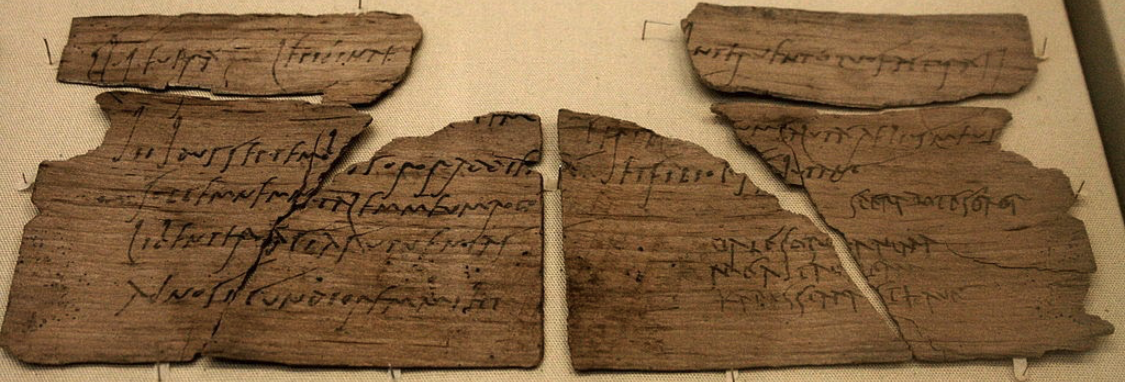58 Vindolanda 292
In this letter to Lepidina, Severa reports that her husband Brocchus has agreed to let her visit her friend at a place called Briga. Unlike the invitation to the party, this letter reveals how frequent and intimate the contact between Lepidina and Severa must have been.

Text
salutem. ego, soror, sīcut tēcum locūta fueram et prōmīseram ut peterem ā Brocchō et venīrem ad tē, petī, et respondit mihi <i>ta corde semp[er li]citum ūnā…
quōmodocumque possim ad tē peruenīre. sunt enim necessaria quaedam qua[e] … rem meum epistulās meās accipiēs quibus sciēs quid sim āctūra haec nōbīs….
… eram et Brigae mānsūra. Ceriālem tuum ā mē salūtā.
[back; in another hand] [val]ē m[ea] soror kārissima et animā m(e)a dēsīderātissima…
[first hand] Sulpiciae Lepidīnae Ceria[lī]s ā Seuēra B[rocchī
Commentariolum
This is one of only two surviving letters that span more than a single diptych. Uniquely, the text is written across the entire face of the open diptych instead of in two columns. The valediction, as in 291, is written in Severa’s own hand.
2 petī = petiī or petivī
respondit: the subject is Brocchus, Severa reports what her husband told her.
ita corde: must here mean something like “readily” or “to your heart’s content”.
semp[er li]citum [est]: “it is always permitted”.
ūnā: adverbial. The gap in the text after ūnā must have had a verb of motion expressing what Brocchus as agreed to let Severa do.
3 sunt enim: since you know that enim is postpositive, you know (even without punctuation) that a new clause has begun with sunt.
4 necessaria: unfortunately the letter does not preserve what Severa must have or must do.
5 rem meum: the change of gender for rēs is not uncommon in later Latin.
sim āctūra: periphrastic allows for emphasis of the futurity of the action while preserving the subjunctive (remember that the simple subjunctive has no future tense).
6 mānsūra [ero]: Severa will await Lepidina (or her reply) at Brigae, the location of which is unknown.

